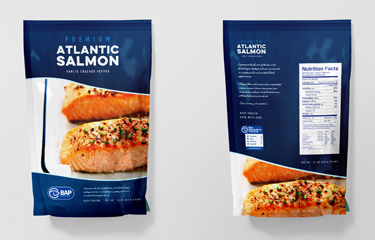Eighteen years after a shrimp farm in Belize became the first Best Aquaculture Practices-certified facility, the program continues to grow at a healthy rate and is eyeing expansion into China.
The Global Seafood Alliance’s BAP third-party certification program grew 8.6 percent in 2021, ending the year with 3,169 BAP-certified facilities in six continents and 39 countries, up from 2,918 BAP-certified facilities at the end of 2020, according to the organization.
“In another year wrought with challenges and disruptions brought on by the pandemic, only 187 BAP-certified facilities dropped from the program last year, resulting in a retention rate of 93.6 percent in 2021, up from 91 percent in 2020,” it said in a press release. “That’s the highest that it’s been in at least five years, when the retention rate ranged from 89 percent to 91 percent. Additionally, 540 facilities became BAP-certified for the first time.”
Of the 3,169 BAP-certified facilities, 1,876 are farms currently in operation, 335 are farms currently in fallow, 437 are processing plants, 47 are processing plants engaged in re-processing, 324 are hatcheries and 150 are feed mills, BAP said. The 1,876 farms currently in operation report more than 3 million metric tons (MT) of annual production, a 19.7 percent increase from 2020 to 2021. Atlantic salmon is the top species certified by volume at 1.37 million MT of annual production, followed by shrimp at 695,607 MT, tilapia at 350,197 MT, pangasius at 126,138 MT, trout at 109,206 MT, and mussels at 98,545 MT.
“Our retention rate really speaks to aquaculture producers’ commitment to the full spectrum of sustainability, whether it’s environmental and social responsibility, animal health and welfare, or food safety. They continue to be challenged by supply chain disruptions, labor shortages and inflation, yet despite these headaches they remain steadfast in their belief that their businesses can’t grow responsibly without the third-party assurances that certification programs like BAP provide,” GSA CEO Brian Perkins said. “I’d like to thank our endorsers up and down the seafood value chain, including retailers and foodservice operators, for continuing to support us and the work that we do.”
BAP highlighted the fact that Sri Lanka had its first company – Taprobane Seafood Group – certified to offer three-star BAP shrimp; the first certification of a Spanish feed mill, operated by Dibaq Group; and the adoption by Regal Springs Tilapia of a traceability system that integrates directly with BAP.
Additionally, the Best Seafood Practices (BSP) certification program, which GSA introduced in 2021 and which links the Responsible Fishing Vessel Standard certification for vessels with the Seafood Processing Plant Standard certification for facilities, ended the year with 27 enrolled entities.
In 2022, the Global Seafood Alliance is aiming its gaze at China, with a goal of aligning with surging American soy imports to grow adaptation of its Best Aquaculture Practices (BAP) certification in the world’s biggest producer of seafood from aquaculture. It’s also offering its BSP certification to Chinese plants processing wild-caught seafood.
Iris Xin Wang, director of market development at the organization’s office in China, told SeafoodSource GSA is seeking to increase awareness of its certification in China through brand endorsement of live-streaming online sales of seafood. To increase consumer awareness of the BAP brand, GSA’s China office is also planning to create more consumer-facing content, including short videos and social media campaigns with BAP endorsers and certified producers. It is also planning a Chinese market survey to learn more about the market and trends that could favor its certification in the future.
“From the aspect of certified numbers, we see [a] stable increas[e], even with the impact of COVID and international trade. What’s more encouraging is that we have seen a very positive signal that there’s a need from the Chinese market for standard aquaculture practices and for certification,” Wang said.
Wang also said GSA is planning a joint fish-farming project between the BAP and the U.S. Soy Sustainability Assurance Protocol (SSAP). In 2021, a Chinese catfish farm operated by Liyang Chen Qiang became the first yellow catfish farm in the world to earn aquaculture certification from the U.S. Soy Sustainability Assurance Protocol (SSAP) and Best Aquaculture Practices (BAP). The China office of the U.S. Soybean Export Council provided technical support, training, and partly subsidized SSAP-BAP certification for Liyang Chen Qiang.
China increased its imports of U.S. soybeans and processed soy in 2021, even as overall shipments into the country dropped.
In regard to GSA’s newest program certifying processors of wild-caught seafood, Wang said GSA wants to “provide the same level of assurance” with its Best Seafood Practices (BSP) program it has offered for 18 years with its BAP program.
Photo courtesy of Best Aquaculture Practices







